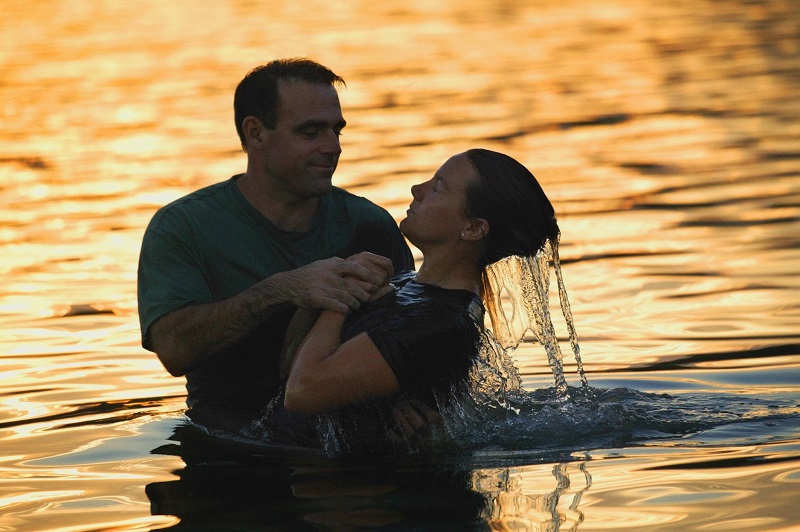Two Views of Baptism
By David B. Sable
Watauga County
The popular, contemporary way of looking at baptism is to view it as a kind of testimony after one receives Christ. In this picture, one must have put their faith in Christ and is expressing to the world what took place. Bolstering this view is Acts 8:36 where the eunuch said after he believed, “See, here is water! What prevents me from being baptized?” implying to many Christians that belief should come first and later the baptism. Taking this view, one would definitely look askance at the practice of baptizing infants.
The early church inherited a more Jewish practice. When pre-Christian Jews converted from Paganism, the men were not only circumcised, their entire household was washed in water in a rite of cleansing from their unholy ways as they were brought into the commonwealth of Israel. The picture denotes being brought from a dark culture into the covenant of faith – not as individuals but as households.
The church continued this practice and saw baptism as an entrance into the church. Both Lydia and the Philippian jailer were saved and baptized along with their household (Acts 16). The baptized were being cleansed from the kingdom of darkness and brought into the kingdom of light. The church took the difficult passage of 1 Peter 3:21 seriously, “Baptism, which corresponds to this, now saves you, not as a removal of dirt from the body but as an appeal to God for a good conscience, through the resurrection of Jesus Christ”. This was pictured by Noah whose entire household was brought to safety in the ark.
Leaders of the English Reformation wrote (as well as Luther believed) “Baptism is also a sign of Regeneration or new Birth whereby, as by an instrument, they that receive Baptism rightly are grafted into the Church; the promises of forgiveness of son, and of our adoption to be the sons of God by the Holy Ghost, are visibly signed and sealed; Faith is confirmed, and Grace increased by virtue of prayer unto God.” (Articles of Religion 37)
It goes on, “The Baptism of young Children is in any wise to be retained in the Church, as most agreeable with the institution of Christ.” (Articles of Religion 37)
The Church Fathers and the early Reformers were not ignorant people. They knew about the thief on the cross and his inability to be baptized. They would say that God is not limited by His means of grace. In other words, even though the thief was not able to be baptized, he was still in Paradise with Christ. Further, the child who died before baptism does not perish. But these are exceptions to the practice of the church that brought converts into the covenant of grace and into the body of Christ through the waters of baptism.
Baptism is not divorced from faith and repentance. It is assumed those of age who are baptized want to be baptized, believe in Christ, and repent from their sins. Those who are infants are carried in much like friends brought the paraplegic to Jesus by lowering him through the roof. Their parents and godparents commit to raising the infant in the faith. Like a child who inherits the title of king to one day grow into, the baptized infant is offered the title of covenant grace to grow into as well. If the older child rejects the faith, their infant baptism will be a means of judgment seeking to call them back from their path of damnation.
For most of my Christian life, I assumed the first view, the believer’s baptism view, as it is the most prevalent in popular Evangelicalism. While I wouldn’t condemn this practice or see it as an invalid baptism, one has to honestly ask why this second view was the exclusive view of the church for over 1500 years through the early Reformation. Was the church completely out to lunch on this point until modern sensibilities came along to get it right? On what basis did baptism get separated from faith as a kind of optional, disconnected add-on?
The fact that faith and baptism are tied together in Scripture is not because baptism has some sort of salvific property apart from faith. Rather it is because the church never thought of the two as separate as we often do today.
_______________________________________________
David B. Sable lives in Deep Gap, NC with his wife Loretta. They have two grown men. He serves as a member of Christ the King, an Anglican fellowship in the ACNA in Boone, NC
_______________________________________________
Read more Christian news here. See more video content here.







